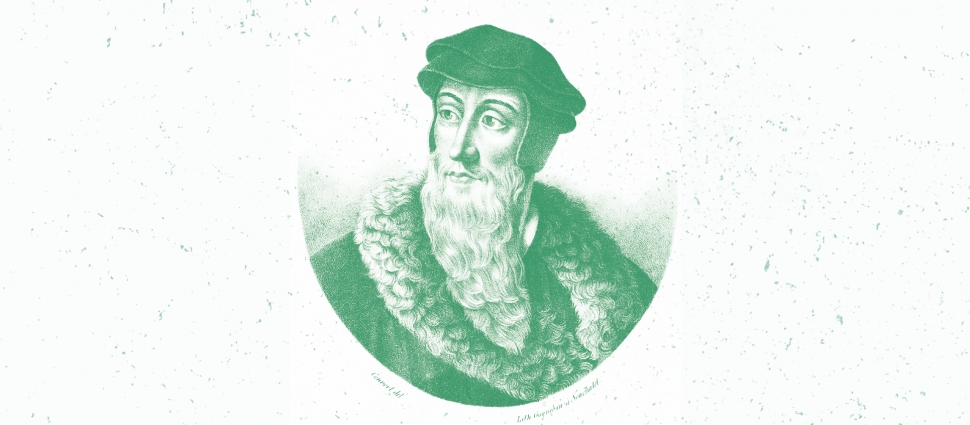Blog 80: 2.14.1 - 2.14.4

Chapter 14 delves us deeper into Trinitarian theology and Christology, dealing with one of the most controversial matters of the early church, the two natures and one person of Christ. Calvin begins in paragraph 1 with an entirely lucid statement of the true doctrine. He first warns against any idea of the human and divine mingling in Christ (known as the Eutychian heresy). Calvin affirms the basic issue: God the Son became man. The Second Person of the Godhead did not come into existence in the Bethlehem manger, but the divine Son took up our flesh. "We affirm his divinity so joined and united with his humanity that each retains its distinctive nature unimpaired, and yet these two natures constitute one Christ." There is Calvin's doctrine, and a vital one it is.
I confess to being always nervous when it comes to incarnational analogies, including Calvin's analogy of the human body and soul, and modern science would not be very approving of him here. Calvin's main point is that man possesses both body and soul - two different natures - while being only one person. If we take it for what it is, it illustrates his Christological teaching, but we need to not take this illustration any further. The reality is that there are no true human analogies for the incarnation.
Calvin concludes his first paragraph with another important point: the Scriptures will sometimes point us to Christ's human nature and sometimes to His divine nature (and sometimes both together), but always to one person. For instance, in John 4, Jesus sat down beside the well because He was tired (human nature) but later Jesus knew all that the woman had done (divine nature). But always one person.
So how do the two natures relate to one another (para 2)? This is another question of great moment in antiquity. Here, Calvin first gives examples of Scriptural references that are proper to Christ's deity and then to his humanity. So in what sense do these two natures "communicate" with one another? The answer is in the one personhood of Christ. Thus was may rightly speak of "the blood of God." How can God have blood? Because God the Son took up human nature and died. (For this reason, there is nothing wrong with saying that "God died" on the cross.) The effect is that while the two natures are always distinguished and are never mingled, nonetheless "a property of humanity is shared with the other nature." Christ in his person "gave to one [nature] what belonged to another."
The key to relating the two natures of Christ, then, is the unity of the person of Christ, which Calvin considers in paragraph 3. Calvin marshals an overwhelming array of Scriptures to prove this unity of person. But Calvin takes this further and focuses on the unity of the person of Christ as our Mediator. It is for the sake of this office that God became man, and it is the person of the Mediator who unites a divine and human nature. Calvin goes so far as to insist that "the name 'Lord' exclusively belongs to the person of Christ only is so far as it represents a degree midway between God and us." Christ's lordship is not one of nature, given His divinity, but one of office for our sakes and for the greater glory of God in our salvation.
Lastly, Calvin treats with the ancient errors of Nestorius and Eutyches, and his own contemporary Servetus. Nestorius taught that there are in effect two persons in Christ. Eutyches argued for one mingled nature and one person. Calvin never treats Servetus' doctrine directly, but just associates him with Nestorius and Eutyches.
Summing up Calvin's introduction to the Christological issues pertaining to Christ's natures and person, we are reminded why Calvin is so valuable after so many years. Here, as elsewhere, he excels in sober exposition and in soaring sacred prose. Anyone considering these matters should consult Calvin first and often.




